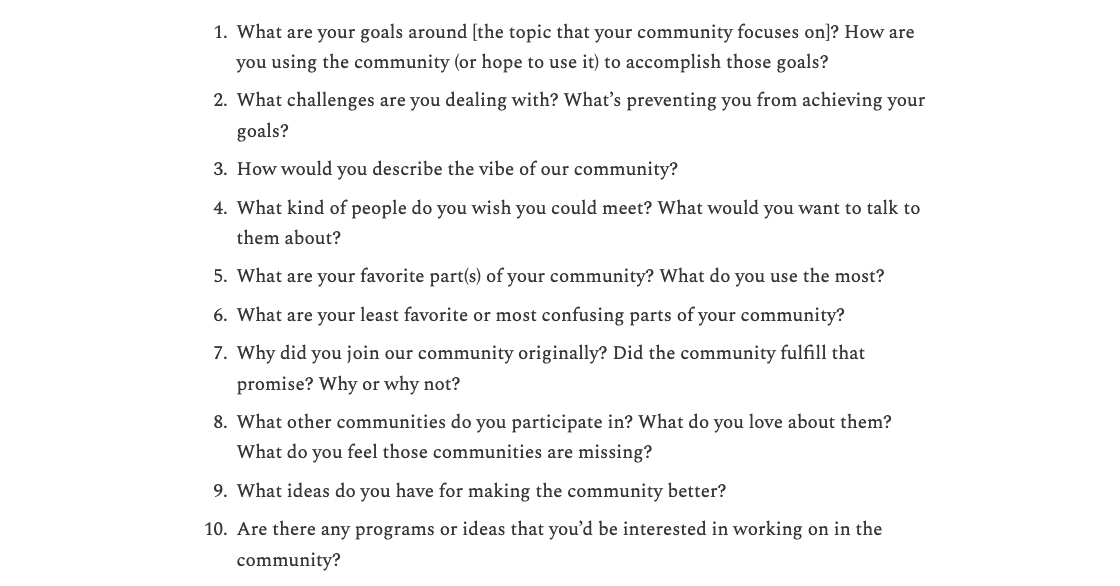Bringing Flatlined Communities Back to Life
Learn the 6-step process to revive a flatlined community. Understand the common macro issues such as shifts in technology, culture, and economy. Measure engagement metrics to get a baseline.

David Spinks
I study communities and teach you how they work. Newsletter: https://t.co/lITdtXEg9m Book: https://t.co/xxTOwo8D4j Jobs: https://t.co/qPXqom1BCp

-
I've spent the last 20 years studying how communities work.
— David Spinks (@DavidSpinks) April 11, 2023
Here's the 6-step process I use to bring a flatlined community back to life: -
Step 1: Zoom out - Identify potential macro issues
— David Spinks (@DavidSpinks) April 11, 2023
Three common macro issues:
1. Shifts in technology (eg. facebook changes algorithm)
2. Shifts in culture (eg. web3 trends down)
3. Shifts in economy (eg. members can't afford community -
Step 2: Benchmark - Get a baseline for where your community is today
— David Spinks (@DavidSpinks) April 11, 2023
Organize three metrics buckets:
1. Engagement metrics: Total Active Members, Posts, Comments, and Traffic
2. Content metrics: Emails, Onboarding, Events, Top Posts
3. Member satisfaction: NPS, CMFS -
Step 3: Zoom in - Audit your community experience
— David Spinks (@DavidSpinks) April 11, 2023
Three common causes for engagement decline:
1. Over-centralization - community became cliquey
2. Loss of novelty - community feels stale
3. Lack of structure - community is too noisy -
Figure out what issues you're dealing with using four research methods:
— David Spinks (@DavidSpinks) April 11, 2023
1. Data analysis: Review the engagement and content data you organized
2. UX research: watch 2-3 members use the community
3. Interviews: Talk to 10 members
4. Survey: Collect broad feedback -
6 Areas You Should Audit in Your Community:
— David Spinks (@DavidSpinks) April 11, 2023
1. Onboarding experience
2. Content performance
3. Event attendance
4. Rituals engagement
5. Channel activity
6. Role engagement (eg. mods/chapter leaders) -
10 Questions To Ask in Community Member Interviews and Surveys pic.twitter.com/o8UYB8L8zm
— David Spinks (@DavidSpinks) April 11, 2023 -
Step 4: Brainstorm - Explore what you can cut or build
— David Spinks (@DavidSpinks) April 11, 2023
Stage 1: Cut aggressively. Anything that's not working, cut. Working a little? Probably still cut.
Stage 2: Brainstorm. Run a session with team and/or community members to gather ideas for things to build. -
How to run a community ideation session: pic.twitter.com/bkCCcsf2QU
— David Spinks (@DavidSpinks) April 11, 2023 -
Step 5: Prioritize - Decide on which ideas to focus on
— David Spinks (@DavidSpinks) April 11, 2023
Put all of the ideas from the brainstorm into a spreadsheet, and create a decision matrix using the following criteria:
1. Potential impact
2. Time/effort
3. Cost
4. Team fit pic.twitter.com/Krdw45sjen -
Next, you have to decide:
— David Spinks (@DavidSpinks) April 11, 2023
1. What will your team do?
2. When will you do it?
3. Who will own it?
4. What does success look like? pic.twitter.com/gywTXAedIq -
Step 6: Experiment - Implement solutions and track the results
— David Spinks (@DavidSpinks) April 11, 2023
Try to only run 2-3 experiments every month because:
1. Teams tend to overestimate how much they can do.
2. If you test too many things at once, you won’t know what’s working -
Track and report on your community results in the following intervals:
— David Spinks (@DavidSpinks) April 11, 2023
1. Daily
2. Weekly
3. Monthly
4. Quarterly
5. Bi-annually pic.twitter.com/yqEOTmWQCR -
This was a brief summary of the full process that I published in my newsletter today, on a platform that rhymes with rubslack.
— David Spinks (@DavidSpinks) April 11, 2023
Link to the full article is in my bio 👆
Enjoy this thread? Please like and RT!
Have any questions? Hit reply! pic.twitter.com/hq6P8cELVt
